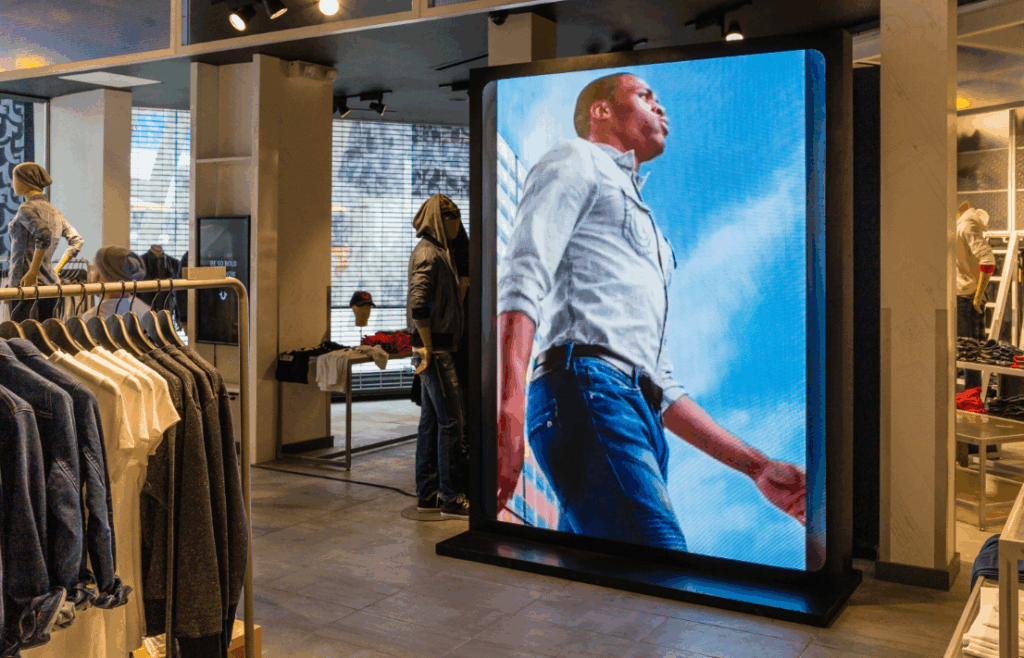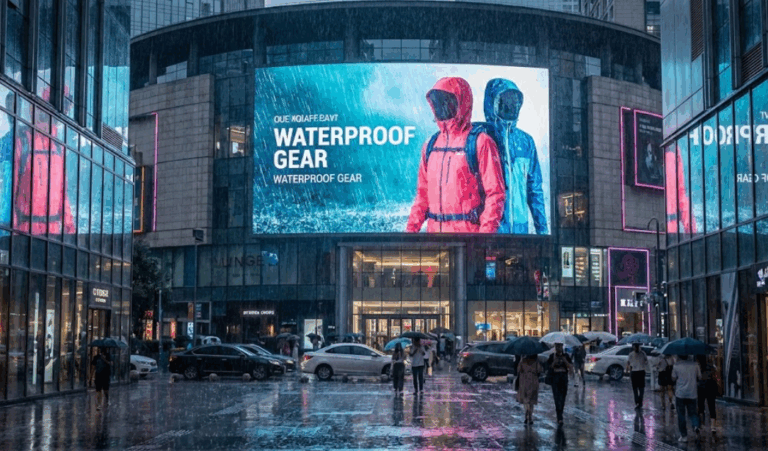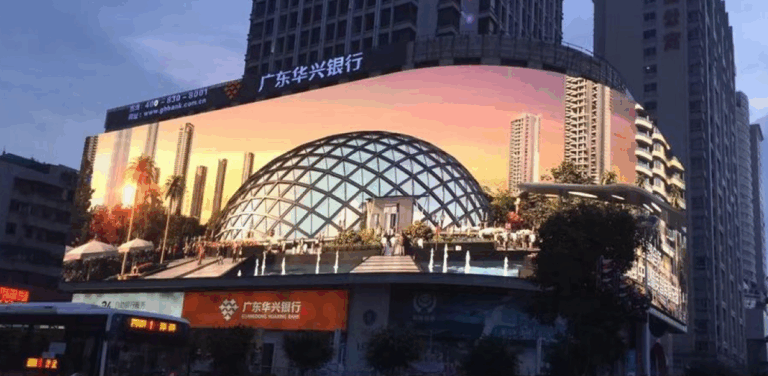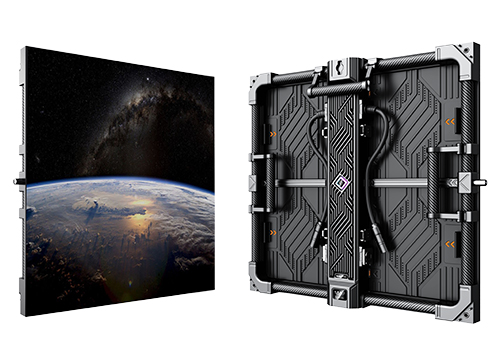Contents
-
Why Do Retail Stores Need LED Displays?
-
What Makes LED Displays Stand Out
-
Core Applications of LED Displays in Retail
-
Real-World Success Stories
-
Buying Guide
-
Content Strategy and Operations for Retail LED Displays
-
Final Thoughts
In today’s fast-paced retail environment, grabbing customer attention and elevating your brand image has become a tougher challenge than ever. As traditional advertising continues to lose its punch, a more dynamic, visually striking, and intelligent tool—LED displays—is reshaping how stores communicate. These screens aren’t just digital posters; they’re powerful assets that help create a retail space that draws eyes and drives revenue.

1. Why Do Retail Stores Need LED Displays?
You might wonder: “My store already has posters and lightboxes—do I really need LED displays?” The short answer: yes. Traditional advertising simply can’t keep up with today’s consumer expectations, while LED displays fill in the gaps perfectly.
The Limitations of Traditional Advertising
Think about a printed poster—no matter how beautifully designed, it’s static and limited. In an era where consumers crave freshness and movement, static visuals can’t compete.
Single-purpose content and slow updates:
Once a poster is printed, the content is locked in. Updating a promotion or launching a new product requires more designing, more printing, and more manpower—which means higher costs and slower reaction time.
Low attention value:
People have learned to ignore traditional posters and lightboxes. They simply blend into the background, making it hard to convey key messages effectively.
No interaction:
Static ads can’t trigger engagement or curiosity, which limits their impact in a modern retail environment.
2. What Makes LED Displays Stand Out
Dynamic visuals:
Videos, animations, images, and text combine to deliver a much stronger visual punch than any static poster.
High brightness:
LED screens remain bright and clear even in strong ambient light—perfect for window displays.
Remote control and management:
With cloud-based control, retailers can update content anytime and coordinate messaging across multiple store locations.
Energy-efficient and sustainable:
Modern LED technology uses less power and lasts longer, aligning with eco-friendly business practices.
3. Core Applications of LED Displays in Retail
Real-time Product Promotions
Showcase best-selling items, new arrivals, limited-time offers, and loyalty rewards. Dynamic updates help customers make faster purchase decisions.
Brand Messaging and Engagement
Display brand story videos, promotional campaigns, or influencer content to strengthen brand identity. Add interactive features—like QR codes for giveaways—to boost engagement.
Smart Guidance for Next-Gen Retail
Paired with touchscreens or sensors, LED displays can support smart navigation, self-service queries, and AI-driven digital assistance, helping stores evolve into “smart retail” spaces.

4. Real-World Success Stories
Window LED Displays for Global Fast-Fashion Brands
Brands like H&M and ZARA use transparent LED screens in their store windows worldwide. These screens maintain natural light while delivering eye-catching animated content that stops pedestrians in their tracks.
Promotion Screens in Local Supermarket Chains
In Southeast Asia, a major grocery chain installs LED screens at store entrances to display weekly specials, boosting awareness and increasing basket size.
Interactive LED Walls in Luxury Shopping Malls
Singapore’s ION Orchard uses massive LED walls to play co-branded campaigns and deliver personalized recommendations through facial recognition and gesture interaction, offering a premium showcase for high-end brands.

5. Buying Guide
LED displays represent a meaningful investment, so understanding the factors that affect cost can help you make a smart decision.
Screen Specifications (Pixel Pitch, Resolution, Brightness)
Pixel pitch:
The smaller the pixel pitch, the sharper the image—and the higher the price.
For example, a P2.5 screen offers higher clarity (and cost) than a P4 screen. Stores typically select pixel pitch based on typical viewing distance.
Resolution:
Higher resolution equals better detail and higher cost.
Brightness:
Indoor screens typically range from 800–2000 cd/m².
Outdoor screens often require 4000–8000 cd/m² to stay visible in sunlight.
Higher brightness also means higher cost.
Installation Environment (Indoor vs. Outdoor)
Indoor:
Focus on clarity rather than extreme brightness.
Outdoor:
Requires higher brightness plus waterproofing, dust resistance, and UV protection—making it more expensive.
Control Systems & CMS Platform
A reliable control system and an easy-to-use content management platform are essential.
Control system:
Handles signal transmission; comes in synchronous and asynchronous types. Better stability and more features raise costs.
CMS platform:
Allows scheduling, uploading, and managing content across multiple screens. Some platforms charge annual or service fees.

6. Content Strategy and Operations for Retail LED Displays
Even the best hardware needs strong content to unlock its value.
Dynamic, Attention-Grabbing Content
Product showcases:
Go beyond static images—use high-definition product videos, 3D animations, or AR try-on demos.
Promotions:
Display countdowns for flash sales, rolling digital coupons, and limited-time offers to create urgency.
Brand storytelling:
Share the brand’s origin, craftsmanship, and community commitments to heighten emotional connection.
Interactive content:
If your screen supports touch or motion detection, add games, QR-code giveaways, selfie booths, or digital check-ins to increase engagement.
Content Updates and Management
Cloud publishing:
Control and update content remotely. Manage multiple store screens from one backend with scheduled playlists and synchronized playback.
Simple creation tools:
Templates and built-in asset libraries help teams create professional content without a full design staff.
Scheduling matters:
Plan content around holidays (Spring Festival, Valentine’s Day, Christmas), anniversaries, product launches, and major campaigns to ensure messages hit at the right time.
7. Final Thoughts: Build a Store That Attracts—and Converts
In the increasingly competitive retail world, LED displays have evolved into more than just advertising tools. They’re now essential for boosting brand image, enhancing the customer experience, and driving digital transformation.
From dynamic visuals to real-time promotions and immersive interactive features, LED displays empower retailers to create a space that not only grabs attention but also drives sales.
Adopt LED display technology, let your store stand out visually, run your marketing more efficiently, and secure a strong foothold in today’s retail landscape.
References:





